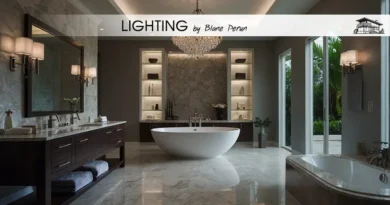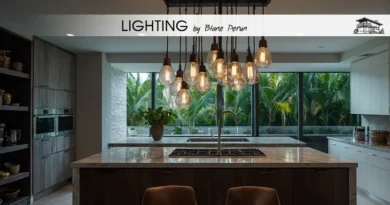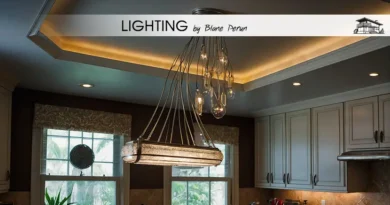Natural Light
Illuminating Spaces: The Art of Natural Light in Interior Design
In the world of interior design, few elements play as crucial a role as natural light. It’s not just about illuminating a room; it’s about transforming spaces, enhancing moods, and even influencing our health and productivity. The strategic use of natural light in interior design can create environments that are not only aesthetically pleasing but also functional and sustainable. With the increasing emphasis on wellness and eco-friendliness in our living and working spaces, mastering the art of incorporating natural light has become more important than ever.

The Science of Sunlight in Spaces
Harnessing the Spectrum: The Biology of Light Perception
Our connection to natural light goes beyond the visible; it’s deeply rooted in our biology. The human eye perceives light through photoreceptor cells, with specific cells called melanopsin-containing intrinsically photosensitive retinal ganglion cells (ipRGCs) playing a key role in regulating our circadian rhythms. By understanding these biological underpinnings, designers can strategically use natural light to enhance occupants’ well-being, leveraging the full spectrum of sunlight to regulate sleep patterns, mood, and even cognitive function.
Architectural Alchemy: Materials and Light
The interplay between materials and natural light is a fundamental aspect of interior design. Materials with different properties—reflective, matte, translucent—interact uniquely with light, affecting the distribution and quality of illumination within a space. For instance, the use of glazing materials with high transmittance values can maximize daylight entry, while surfaces with high reflectance can evenly disperse light, reducing glare and enhancing visual comfort.
The Dynamics of Daylight Design
Spatial Choreography: Layouts that Leverage Light
The layout of a space can significantly influence how natural light is distributed and experienced. Strategic placement of windows, skylights, and even interior elements like walls and partitions can create dynamic light patterns that change throughout the day, adding a living quality to interiors. This involves understanding the sun’s path, considering seasonal variations, and aligning functional areas of a space with the optimal lighting conditions for each activity.
Technological Symphony: Smart Solutions for Light Control
Incorporating technology into natural light design can greatly enhance flexibility and adaptability. Automated shading systems, photochromic or electrochromic glass, and daylight redirecting films are just a few examples of how modern technology can be used to optimize natural light utilization. These solutions can adjust in real-time to changing light conditions, ensuring that spaces are neither underlit nor overwhelmed by glare, thus maintaining a harmonious balance between natural and artificial light.
The Palette of Light: Color and Perception
Emotional Resonance: The Psychology of Light and Color
The color temperature and intensity of natural light can dramatically affect the perception of space and color within an interior. Morning light, with its cooler, bluer tones, invigorates and sharpens focus, while the warmer, golden hues of the afternoon can create a calming, restful atmosphere. Understanding these psychological effects allows designers to enhance the emotional impact of a space, choosing materials and colors that complement the natural light at different times of the day.
Visual Dynamics: Enhancing Spaces with Shadows and Highlights
Shadows and highlights are not mere byproducts of lighting; they are powerful tools in defining and accentuating architectural features. The deliberate design of light and shadow can add depth, contrast, and visual interest to spaces, creating a dynamic interplay between surfaces and volumes. This approach not only elevates the aesthetic experience but also adds a layer of functionality, guiding movement and highlighting areas of importance within a space.
In conclusion, the thoughtful integration of natural light in interior design is both an art and a science. It requires a deep understanding of the physical properties of light, the biological effects on occupants, and the aesthetic potential of daylight as a design element. By embracing the complexities and nuances of natural light, designers can create spaces that are not only beautiful and sustainable but also deeply connected to the natural rhythms of the world around us.

FAQs on Natural Light in Interior Design
What are some design strategies to maximize natural light in a room?
Design strategies to maximize natural light include the strategic placement of windows and skylights, the use of reflective materials to bounce light deeper into a space, and the incorporation of open floor plans that allow light to travel unimpeded. Additionally, the selection of light-colored surfaces and translucent materials can help distribute light more evenly throughout a space.
How does natural light impact well-being in interior spaces?
Natural light plays a significant role in regulating our circadian rhythms, which are essential for maintaining a healthy sleep-wake cycle. Exposure to natural daylight, especially in the morning, can boost serotonin levels, improving mood and focus. In interior design, ensuring spaces are well-lit with natural light can enhance occupant well-being by reducing eyestrain, improving mood, and even increasing productivity.
Yes, natural light can significantly contribute to energy savings in interior design. By maximizing the use of daylight, the reliance on artificial lighting during daytime hours can be greatly reduced, leading to lower electricity consumption. Furthermore, with thoughtful design that considers the thermal properties of materials and the strategic placement of windows for cross-ventilation, natural light can also aid in reducing heating and cooling costs. Implementing daylighting strategies not only decreases energy use but also aligns with sustainable design principles, creating environments that are both eco-friendly and cost-effective.
How do different types of glass affect natural light in interior spaces?
The type of glass used in windows and skylights can greatly influence the quality and quantity of natural light entering an interior space. Clear glass allows for maximum light transmission but can also introduce glare and heat gain. Tinted or low-emissivity (low-E) glass can reduce heat gain while still providing ample daylight, making it a popular choice for energy-efficient designs. Frosted or textured glass diffuses light, reducing glare and providing a more uniform distribution of light, which is ideal for creating soft, ambient lighting conditions.
What role do window treatments play in managing natural light in interior design?
Window treatments are essential tools in managing natural light, offering flexibility in controlling light levels and privacy. Curtains, blinds, shades, and used to diffuse harsh sunlight, reduce glare, and protect interiors from excessive heat gain or loss, contributing to both comfort and energy efficiency. Moreover, these treatments allow occupants to adjust the amount of natural light based on the time of day and personal preferences, enhancing the functionality of a space. With advancements in materials and automation, window treatments can now be optimized for thermal performance and automated for convenience, further enhancing their role in a well-designed natural lighting scheme.
What are the benefits of incorporating natural light in workplace design?
Incorporating natural light in workplace design offers numerous benefits, including improved employee well-being, increased productivity, and reduced absenteeism. Exposure to natural daylight helps regulate circadian rhythms, leading to better sleep quality and higher energy levels during work hours. Additionally, studies have shown that workplaces with ample natural light have lower levels of stress and higher job satisfaction among employees. From an aesthetic standpoint, natural light can make spaces appear more open and inviting, contributing to a positive work environment that fosters creativity and collaboration.
In summary, natural light in interior design is not just about enhancing aesthetics; it’s a multifaceted approach that touches upon health, well-being, productivity, and sustainability. By skillfully integrating natural light into interiors, designers can create spaces that are not only beautiful and functional but also deeply resonant with the human experience and environmentally responsible.





